Pixel 10 vs Galaxy S25: AI power and 5x zoom or a compact speed demon?

Pixel 10 vs Galaxy S25: AI power and 5x zoom or a compact speed demon?
Both phones start at $799 for a 128 GB model, share similar screen sizes, and cater to users who want a premium experience but without going overboard on their spending. But there are some notable differences that might make you lean towards one of them more than the other.
Pixel 10 vs Galaxy S25 differences explained:
| Pixel 10 | Galaxy S25 |
|---|---|
| New Tensor G5 chip (AI-focused, not as fast) | Snapdragon 8 Elite, top-tier performance |
| 6.3” OLED display | 6.2” AMOLED display |
| 60-120Hz display refresh rate | 1-120Hz display refresh rate |
| 3,000 nits brightness | 2,600 nits peak brightness |
| Thicker, taller, wider, heavier | compact and leightweight |
| Triple camera system | Triple camera system |
| 5x telephoto camera | 3x telephoto camera |
| Face Unlock payments | Payments only via fingerprint scanner |
| 30W wired charging | 25W wired charging |
| 15W wireless charging | 15W wireless charging |
| Magnetic wireless charging | No magnetic wireless charging |
| $799 | $799 |
Table of Contents:
Design and Display Quality
The S25 is still the best compact phone, but Pixel 10 has a good reason for its larger size
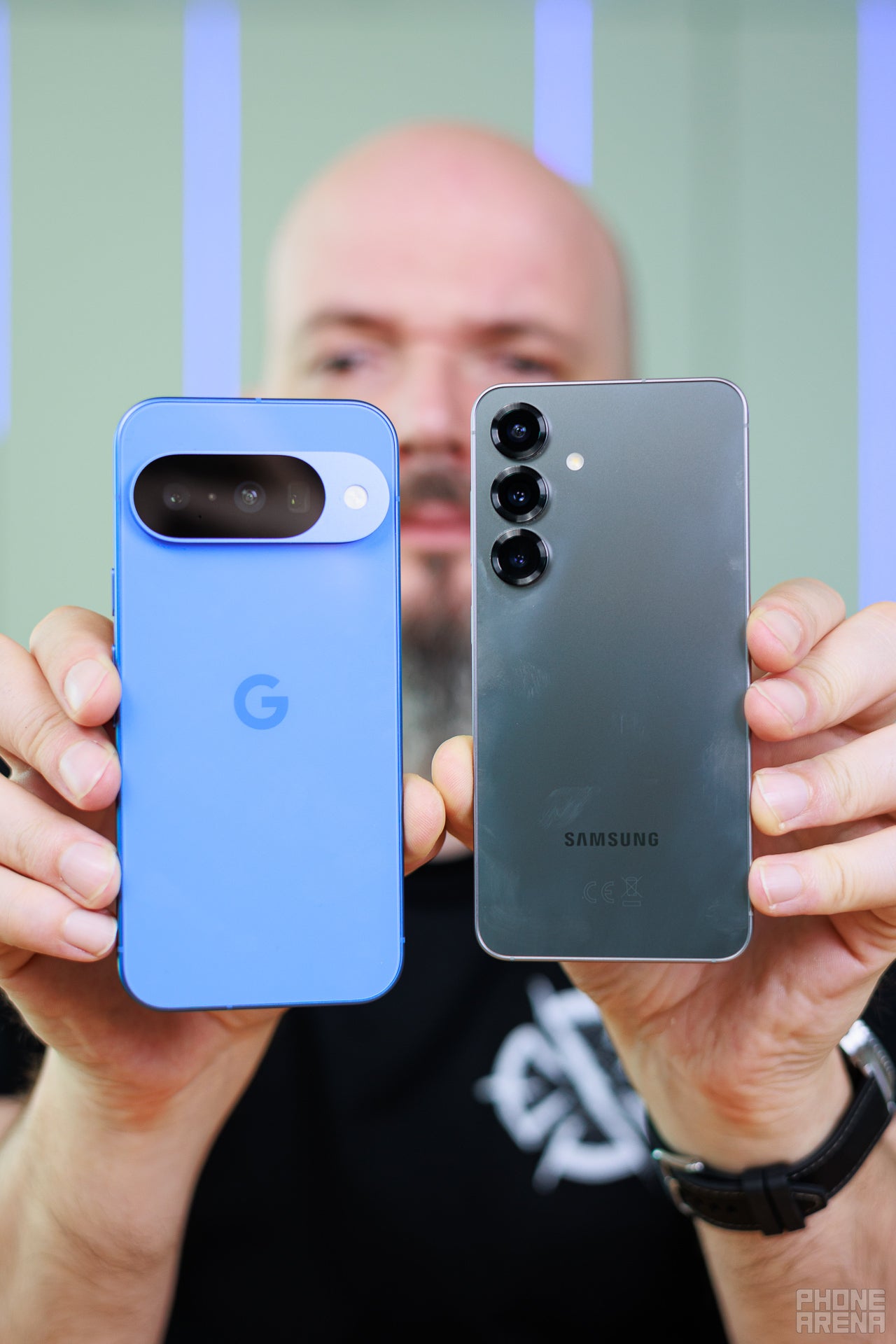

Galaxy S25 stays slim and light at 162 g, making it a rare compact flagship. | Image by PhoneArena.


Pixel 10 is bigger and heavier at 204 g, but adds a 4,970 mAh battery and Pixelsnap magnetic charging. | Image by PhoneArena.
The Pixel 10, by comparison, is larger and noticeably heavier at 152.8 x 72.0 x 8.6 mm and 204 g. But that extra heft has a purpose: it packs a 4,970 mAh battery and built-in magnets for Google’s new Pixelsnap accessory ecosystem, enabling magnetic wireless charging along with add-ons like stands and grips.
| Pixel 10 | Galaxy S25 |
|---|---|
| Thickness 8.6 mm | Thickness 7.25 mm |
| Dimensions 152.8 x 72 | Dimensions 146.9 x 70.5 |
| Weight 204 grams | Weight 162 grams |
Both phones have aluminum frames, Gorilla Glass Victus 2 protection, and IP68 dust/water resistance. The Pixel keeps its horizontal camera bar, while the Galaxy S25 retains Samsung’s minimal vertical camera lenses.
Pixel 10 colors include Obsidian, Indigo, Frost, and Lemongrass, while Galaxy S25 colors consist of more muted shades like Icy Blue, Mint, and Silver Shadow.
Biometrics are also closely matched, with ultrasonic fingerprint scanners and face recognition on both devices. Google, however, claims its new sensor is faster and more reliable than what previous Pixels offered.
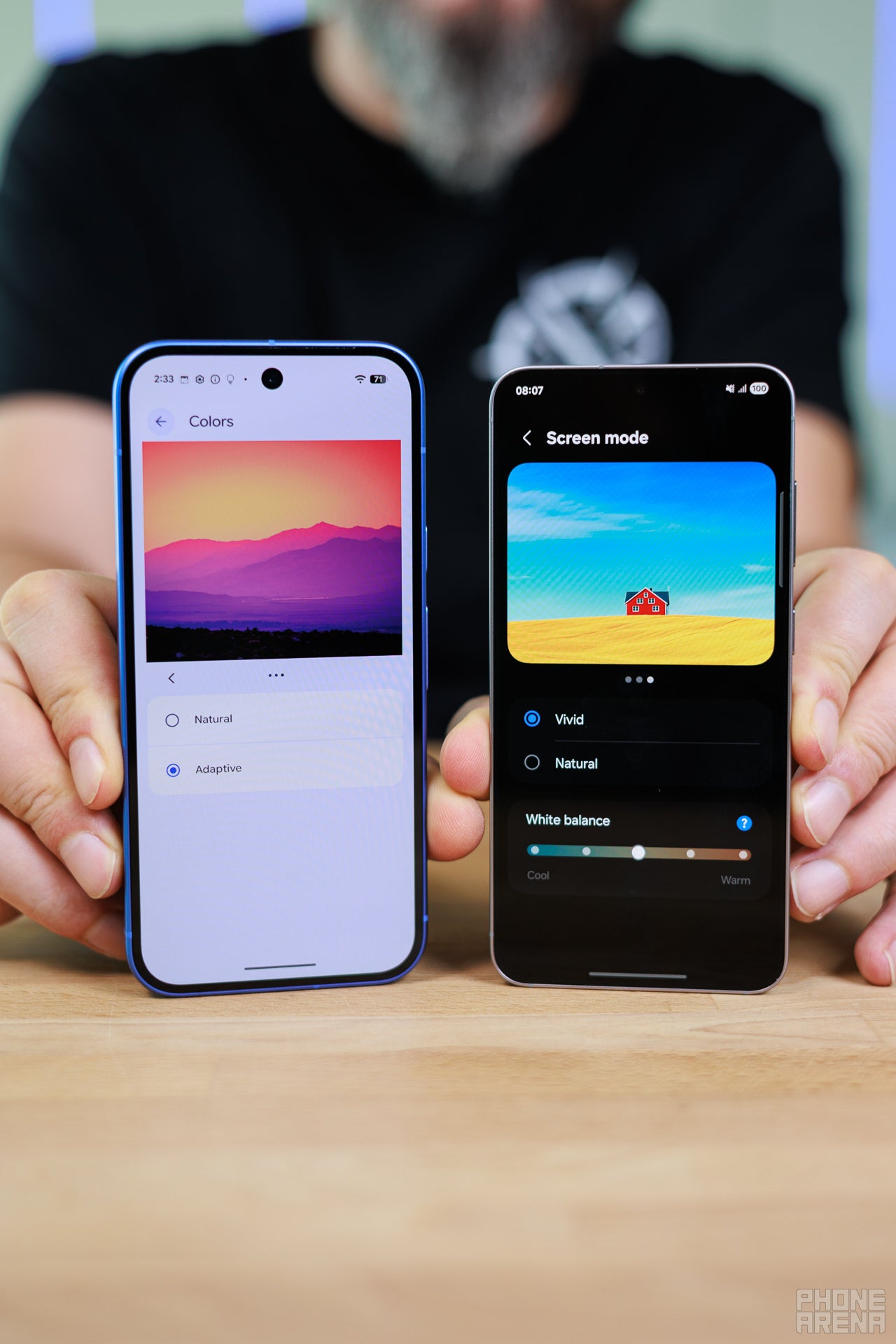

Pixel 10 edges ahead in brightness and color, while Galaxy S25 wins on efficiency with its 1Hz LTPO screen. | Image by PhoneArena.
| Pixel 10 | Galaxy S25 |
|---|---|
| Size 6.3" | Size 6.2" |
| Brightness 3000 nits (peak) | Brightness 2600 nits (peak) |
The Pixel 10 hit 2,822 nits at 20% APL and 1,940 nits full-screen (white), while the S25 topped out at 2,394 nits and 1,313 nits in our display lab tests. Color accuracy also leans towards the Pixel with a lower Delta E showing more accurate colors. Samsung goes dimmer at minimum brightness, which is nicer in a dark room.
Performance and Software
The first fully custom Tensor meets Snapdragon muscle
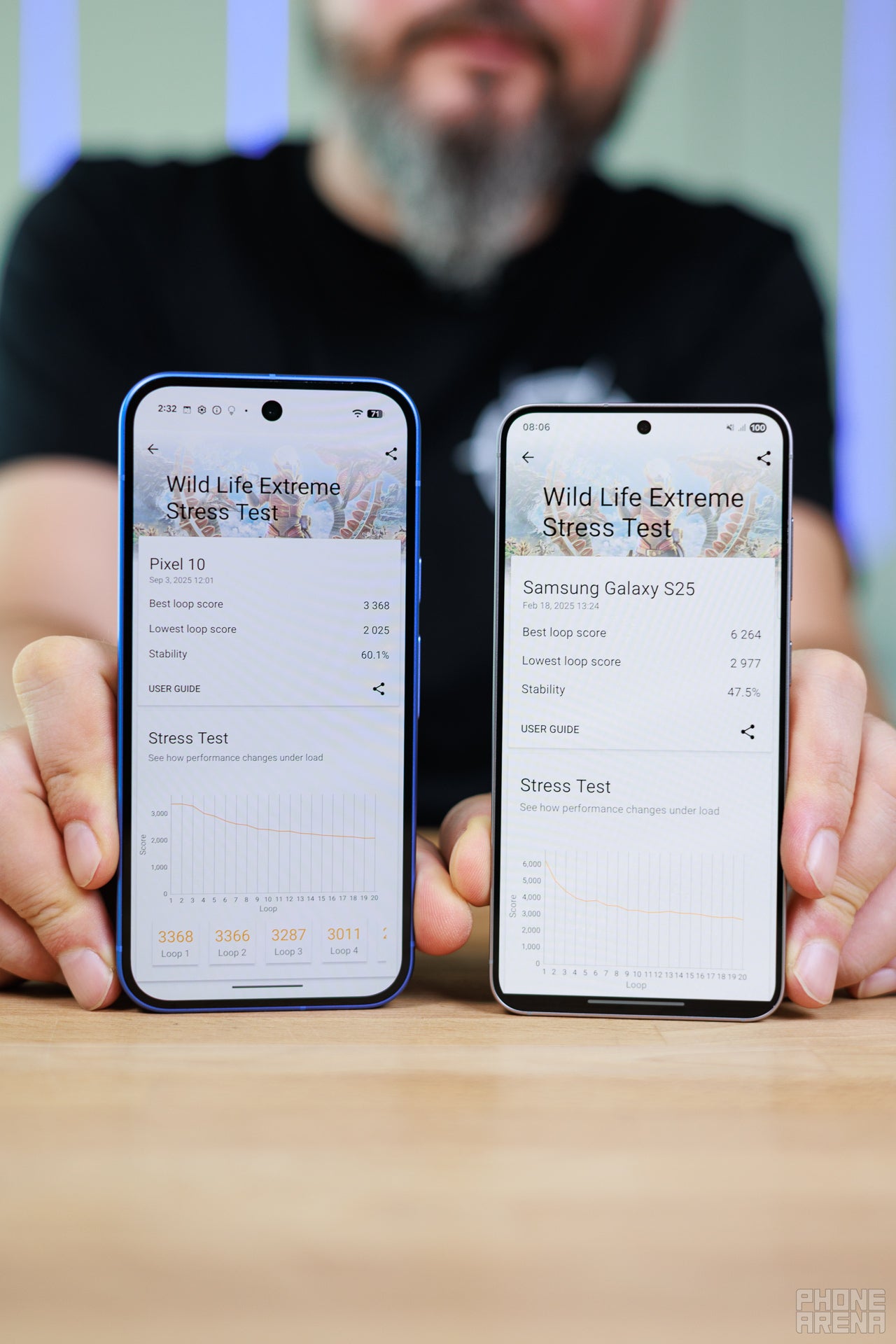

Galaxy S25’s Snapdragon 8 Elite crushes benchmarks, while Pixel 10’s Tensor G5 centers on smarter AI features. | Image by PhoneArena.
The Pixel 10, meanwhile, debuts the Tensor G5 — Google’s first fully in-house SoC, built on TSMC’s 3nm process. Instead of chasing benchmarks, Google focuses on AI. The chip delivers a 34% faster CPU, a 60% stronger TPU, and 2.6× faster Gemini Nano execution compared to the Tensor G4. A new ISP also powers features like motion deblur, default 10-bit HDR video, and sharper low-light footage.
| Pixel 10 | Galaxy S25 |
|---|---|
| Chip Google Tensor G5 | Chip Qualcomm Snapdragon 8 Elite |
| Process 3nm | Process 3nm |
| RAM, Storage 12/128GB 12/256GB LPDDR5X RAM | RAM, Storage 12/128GB 12/256GB LPDDR5X RAM |
CPU Performance Benchmarks:
The Snapdragon 8 Elite inside the Galaxy S25 is has an obvious lead. In Geekbench, it scored nearly 75% higher in multi-core performance and comfortably outpaced the Pixel in the single-core.
GPU Performance
But it is important to mention that the Tensor G5 in the Pixel 10 isn’t about brute force. It’s Google’s first fully in-house SoC, designed with AI at the center. Compared to the Tensor G4, CPU performance is up by 34% and the TPU is 60% faster, enabling on-device features like Magic Cue, Camera Coach, and expanded Gemini Nano tasks. Day-to-day use is smooth, even if benchmarks don’t sound that impressive compared to the S25.
The Pixel 10 launches with Android 16 and new AI features like Magic Cue, which can proactively suggest actions (for example, pulling up your flight details when you call the airline). It also introduces Pixel Sense, a next-generation on-device assistant that ties into Gmail, Calendar, Maps, and more for deeper, context-aware help.
The Galaxy S25, by contrast, shipped with Android 15 and One UI 7, powered by Galaxy AI. Useful tools like Circle to Search, Live Translate, and Chat Assist are here, but many of the most impactful features still come from Google. Samsung’s own additions, like the Now Bar, show promise but feel less refined.Camera
Equal at last?
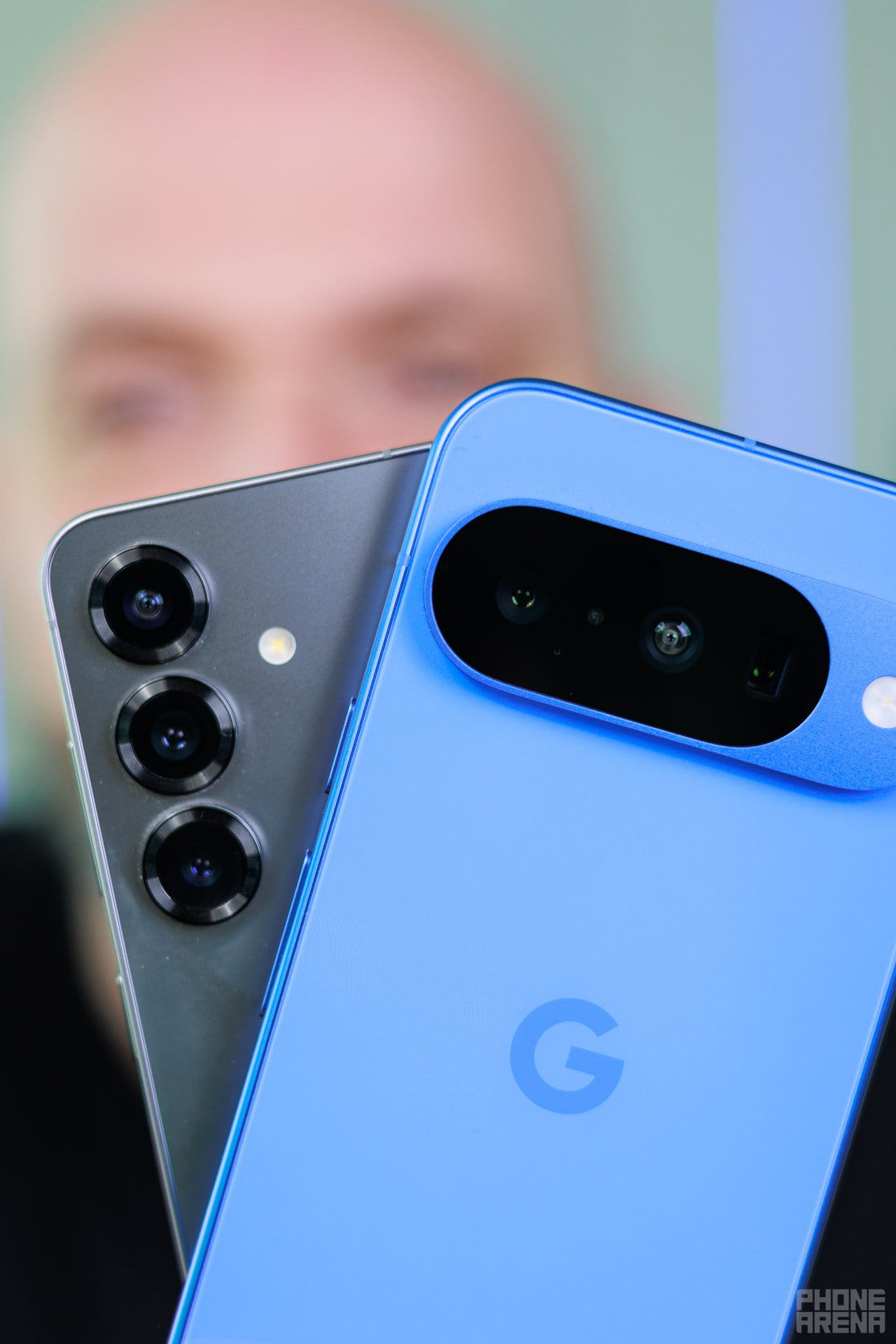

Both camera systems are solid, but there are key differences that might affect your choice. | Image by PhoneArena.
For the first time, the Pixel 10 gets a triple-camera setup, complete with a 5x telephoto lens. This gives it more reach than the Galaxy S25’s 3x telephoto, though Samsung’s shorter zoom can be more practical for portraits.
The S25 has a slightly larger main sensor, which helps in low light, and 8K video recording. Google has also introduced new features like Camera Coach (which we found a bit gimmicky), a refined HDR+ pipeline, and 10-bit HDR video across all cameras.
The Galaxy S25 leans on the same camera hardware from a few generations back, relying more on software tweaks than anything else. You do get new tricks, though, like Log video recording, Audio Eraser to remove unwanted sounds (the Pixel 10 also has this), and further refinements in night photography to keep it competitive. Despite its older hardware, the S25 continues to deliver strong results without major hardware changes, as you will see from our samples below.
In our Camera Score, both ended up equal at 147 points, but got there in different ways. The Pixel scored higher in photos, while the Galaxy pulled ahead in our video recording test. At the end of the day, though, the experience is quite similar.
Main Camera
The truth is that the main cameras on both phones offer excelent image quality. That said, there are a couple of differences worth mentioning.
In an environment with less light, the two perform even more similarly. When it comes to the HDR, though, things seem to have flipped. The S25 was able to capture more detail both in the shadows and in the highlights (look at the right side of the image, where the curtain is).
Zoom Quality
Both phones have a dedicated telephoto camera, but the Pixel's comes with 5x optical zoom, and the S25 has 3x zoom. Naturaly, this means that at 5x, the Pixel 10 produces the better image. In comparison, the S25 looks overprocess and oversharpened, most likely compensating with software.
At 3x zoom, the image from the S25's telephoto camera looks much better. However, the Pixel definitely has the more color-accurate image in both the 5x and 3x scenarios, which gives it an edge, in my opinion.
Ultra-wide Camera
The ultra-wide image taken with the Pixel 10 shows more in the shadows and, again, has more accurate colors.
Selfies
Both phones capture great selfies, but they handle the colors differently. In this case, the scenario is rather difficult for the phone to figure out, as there is a pink hue coming from the surroundings. Whether the S25 took that into account and offered a more "natural" skin color, we can't know, but at the very least its wider angle makes it better for group selfies.
Camera Samples
Battery Life and Charging
Google is the first to add magnetic wireless charging in the Android world
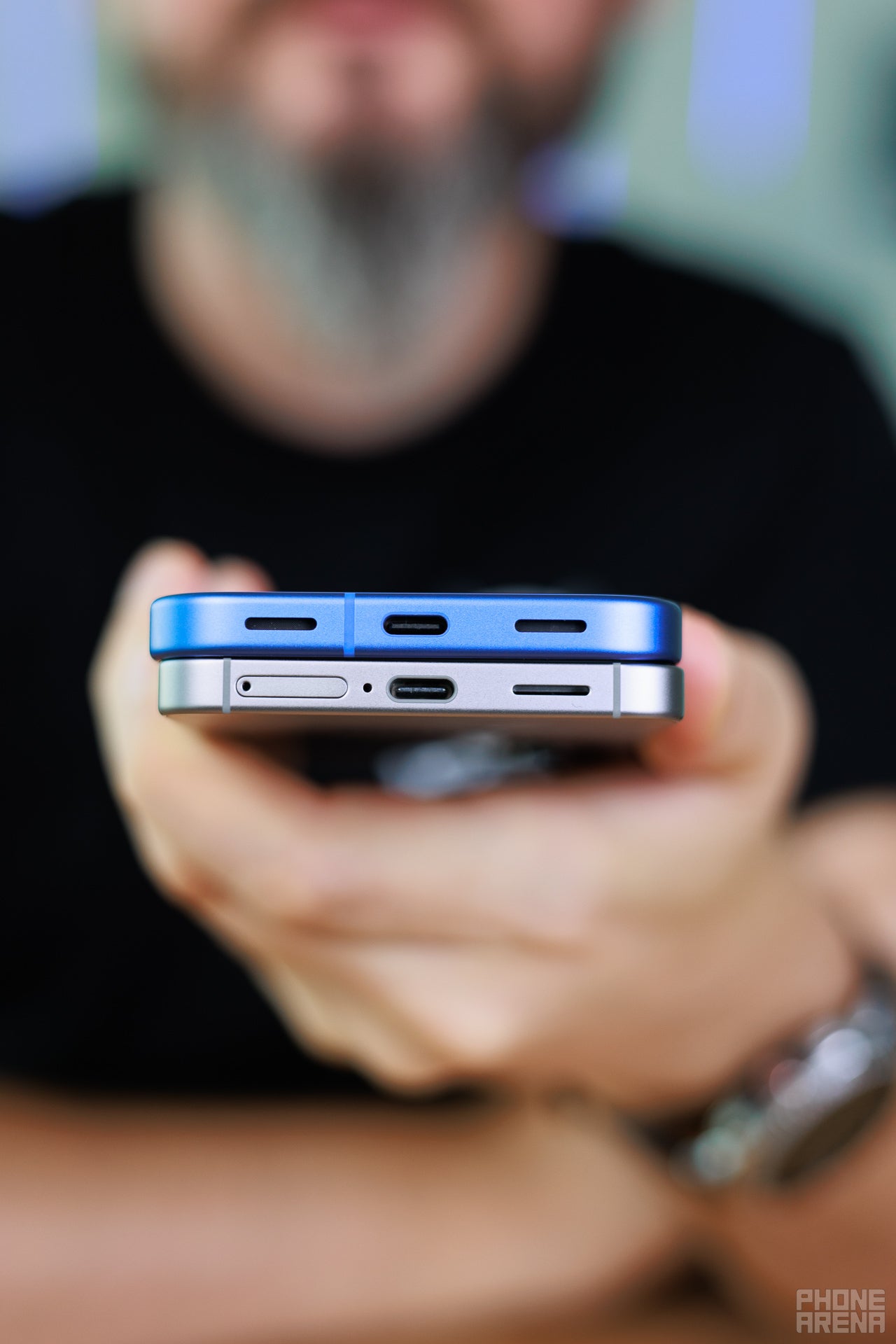

Battery life and charging speeds might be simillar, but it's nice to have magnets! | Image by PhoneArena.
PhoneArena Battery and Charging Test Results:
Where Samsung hit back was gaming. The Galaxy S25 lasted over 12 hours in our gaming test, more than double the Pixel 10’s 5 hours.
Charging speeds are not that different. The Galaxy S25 hit 54% in 30 minutes and fully charged in 1h 22m, while the Pixel 10 managed 50% in 30 minutes and a full charge in 1h 29m. Google’s advantage is Qi2 magnetic wireless charging, making it the first Android flagship with MagSafe-like accessory support.
Specs Comparison
| Pixel 10 | Galaxy S25 |
|---|---|
| Size, weight 152.8 x 72 x 8.6 mm, 204 g | Size, weight 146.9 x 70.5 x 7.25 mm, 162 g |
| Screen 6.3" OLED 60-120Hz | Screen 6.2" OLED 1-120Hz |
| Processor Tensor G5 3nm | Processor Snapdragon 8 Elite 3nm |
| Versions: 12/128GB 12/256GB --- LPDDRX5 | Versions: 12/128GB 12/256GB 12/512GB LPDDRX5 |
| Cameras: 48MP main 13MP ultra 10.8MP 5X zoom 10.5MP front | Cameras: 50MP main 12MP ultra 10MP 3X zoom 12MP front |
| Battery: 4,970 mAh | Battery: 4,000 mAh |
| Charging: USB-C 30W wired 15W wireless Qi2 magnetic | Charging: USB-C 25W wired 15W wireless No magnetic |
Summary
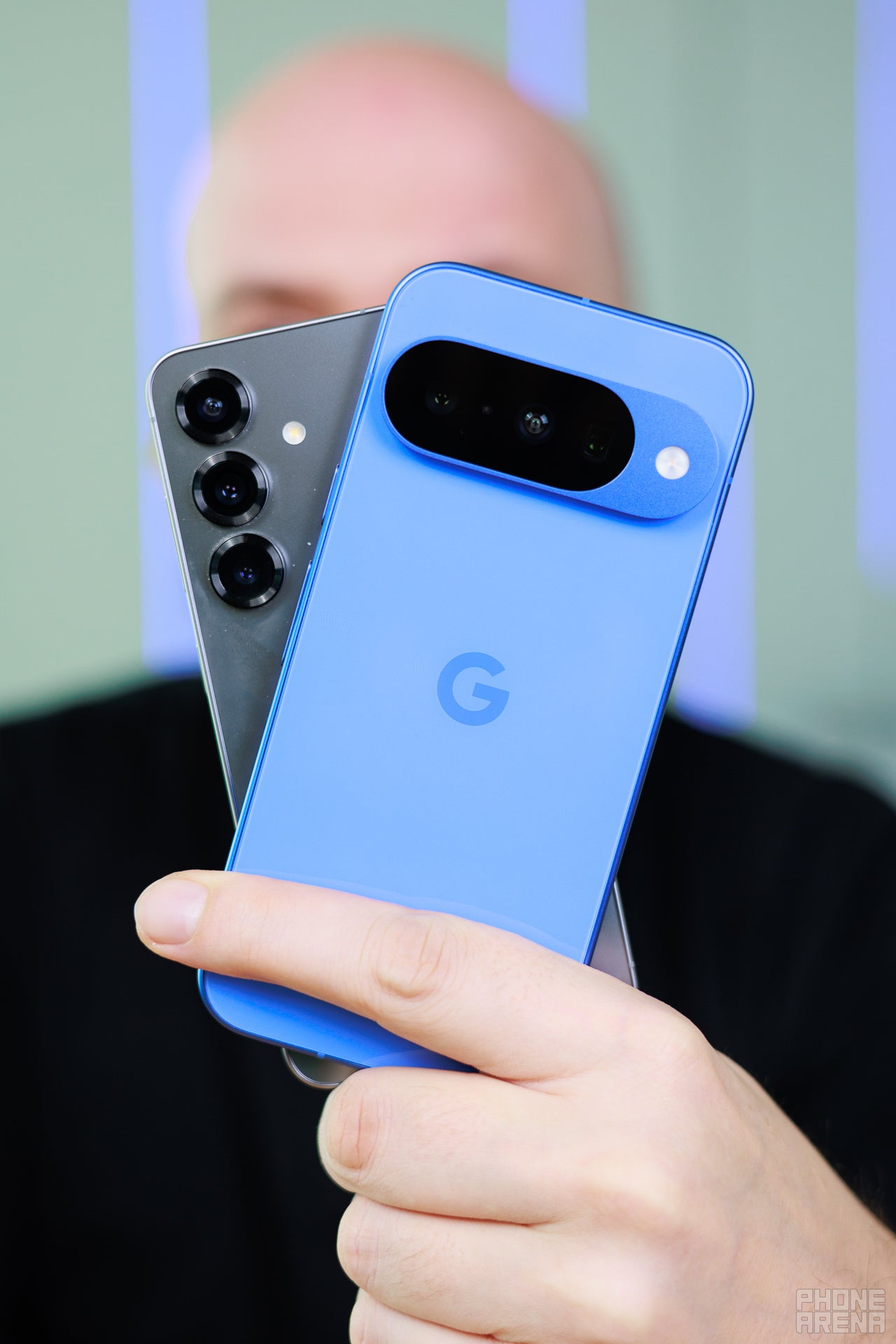

Image by PhoneArena.
The Pixel 10, though, just feels fresher. That extra telephoto lens was the right call, as it finally puts the base Pixel on equal footing with Samsung’s base model, and it even gains some lead compared to the just-released iPhone 17. Add in magnetic charging and Google’s latest AI tricks, and it feels like the more modern phone. Magic Cue and Camera Coach aren’t perfect yet, but they’re real hints at where the industry is going.
So what’s the smarter buy at $799? If you want the smallest, most future-proof flagship with raw power, grab the Galaxy. If you want a phone that feels new and different, one that pushes AI harder and isn’t afraid to experiment, the Pixel 10 is the one that might do it for you.
Source link



